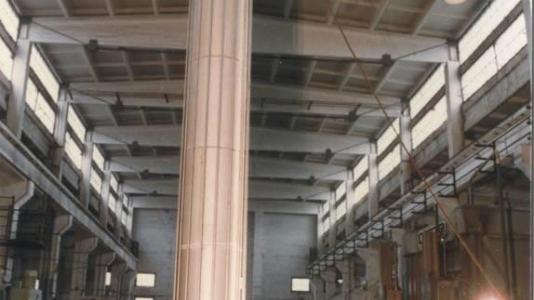
Chinese officials announced at the recent Nuclear Security Summit that the country commenced operations on a small research reactor that was converted to use low-enriched uranium (LEU) fuel in partnership with the National Nuclear Security Administration (NNSA) and the U.S. Department of Energy’s Argonne National Laboratory.
The Miniature Neutron Source Reactor (MNSR) Prototype is the first Chinese reactor to be converted to LEU through international collaboration. The conversion program reduces the proliferation concern of reactors fueled with high enriched uranium (HEU). The MNSR Prototype conversion was accomplished with U.S. technical assistance under the auspices of NNSA’s Office of Material Management and Minimization (M3) Reactor Conversion Program, which has converted or verified shutdown of more than 90 HEU-fueled research and test reactors worldwide over the past 30 years.
“This collaboration between Argonne National Laboratory and their Chinese counterparts to convert the first MNSR was a significant technical milestone and paves the way for continued cooperation on additional MNSR conversions around the world,” said NNSA Deputy Administrator Anne Harrington. “Minimizing the use of HEU is a shared goal, and we are proud of the success achieved through the technical cooperation between Argonne and its Chinese partners.”
“Although this is a small reactor, making this conversion with no loss of functionality was a substantial challenge.”
The Chinese MNSR reactor is a type of small reactor used in six countries — China, Ghana, Iran, Nigeria, Pakistan and Syria. The reactor generates neutrons for various experiments and analyses, particularly neutron activation analyses that allow highly detailed determination of material compositions. For instance, the potential value of soil and mineral samples can be quantified, or environmental protection can be tracked, by quantifying contaminants in samples.
The reactor’s small size and inherent safety make it a good choice for these types of experiments and for training nuclear engineers.
“Each country and each reactor has its own challenges, but this conversion was significant because it was the first collaborative conversion we have done with China,” said James Morman, project manager for MNSR conversion at Argonne. “It was a pleasure to work with our Chinese colleagues, because we all had the same objective and worked well together, sharing our expertise to achieve the mission. We look forward to building on this success for each of the remaining MNSR conversions in the years ahead.”
Argonne’s team of experts apply the laboratory’s 70 years of experience in reactor design to help countries and agencies redesign reactors to use LEU, which is defined as nuclear fuel with concentrations of less than 20 percent of uranium-235 (U235). LEU poses a lower risk of nuclear proliferation because the more common natural isotope, U238, absorbs more neutrons than U235, which makes it more difficult to sustain a nuclear chain reaction.
Argonne’s team of experts in neutronics, thermal-hydraulics and materials worked with their Chinese counterparts to redesign the reactor core to contain a more dense fuel paired with structural materials that absorb fewer neutrons, thereby allowing the reactor to operate in the same parameters with the LEU fuel.
“This is really where our team’s decades of experience are critical,” said John Stevens, who manages Argonne’s Research and Test Reactor Department. “Although this is a small reactor, making this conversion with no loss of functionality was a substantial challenge.”
The MNSR reactor core is about the size of a large coffee can, contains about a kilogram of fuel and rests at the bottom of a tall column of water. The Chinese team extracted the old core, placed it in a shipping container designed by Argonne and sent it to Chinese facilities for disposition. The new core was inserted and startup operations commenced last month.
The M3 program continues to work with other countries and research institutions to convert research reactors, including talks to convert another MSNR in China. To date, in addition to converting or confirming the shutdown of 96 research reactors and isotope production facilities, M3 has removed or confirmed the disposition of more than 5,300 kilograms of HEU and plutonium worldwide, permanently eliminating the threat of that material being used in a nuclear weapon.
Argonne National Laboratory seeks solutions to pressing national problems in science and technology. The nation’s first national laboratory, Argonne conducts leading-edge basic and applied scientific research in virtually every scientific discipline. Argonne researchers work closely with researchers from hundreds of companies, universities, and federal, state and municipal agencies to help them solve their specific problems, advance America’s scientific leadership and prepare the nation for a better future. With employees from more than 60 nations, Argonne is managed by UChicago Argonne, LLC for the U.S. Department of Energy’s Office of Science.
The U.S. Department of Energy’s Office of Science is the single largest supporter of basic research in the physical sciences in the United States and is working to address some of the most pressing challenges of our time. For more information, visit the Office of Science website.
Established by Congress in 2000, the U.S. Department of Energy’s National Nuclear Security Administration (NNSA) is a semi-autonomous agency within the department responsible for enhancing national security through the military application of nuclear science. NNSA maintains and enhances the safety, security and effectiveness of the U.S. nuclear weapons stockpile without nuclear explosive testing; works to reduce the global danger from weapons of mass destruction; provides the U.S. Navy with safe and effective nuclear propulsion; and responds to nuclear and radiological emergencies in the United States and abroad. Visit the NNSA website for more information.